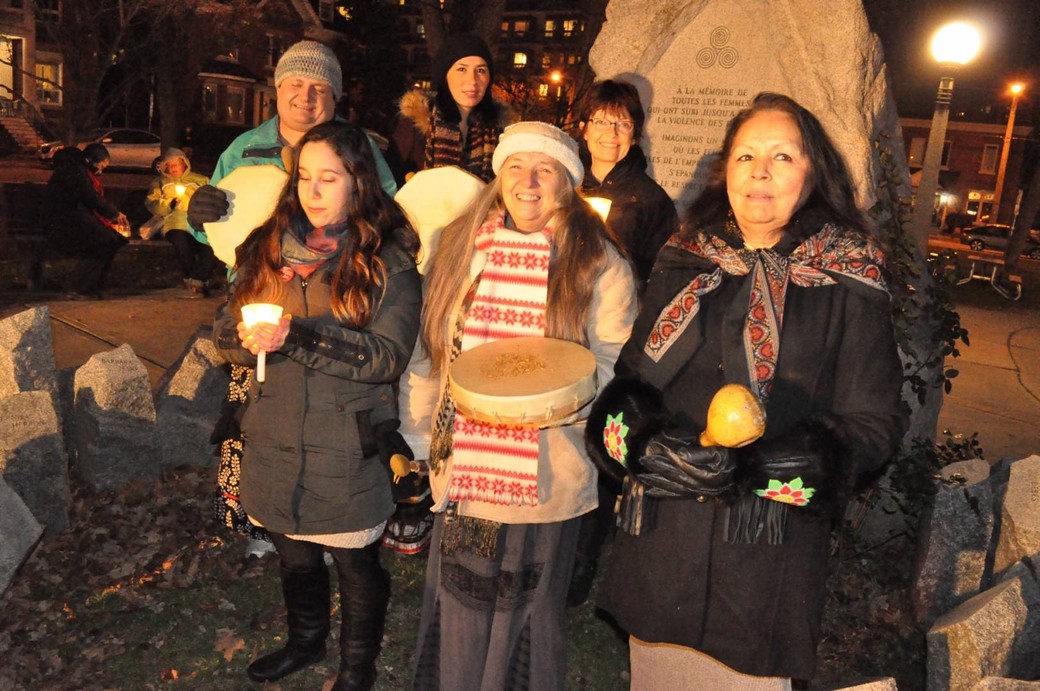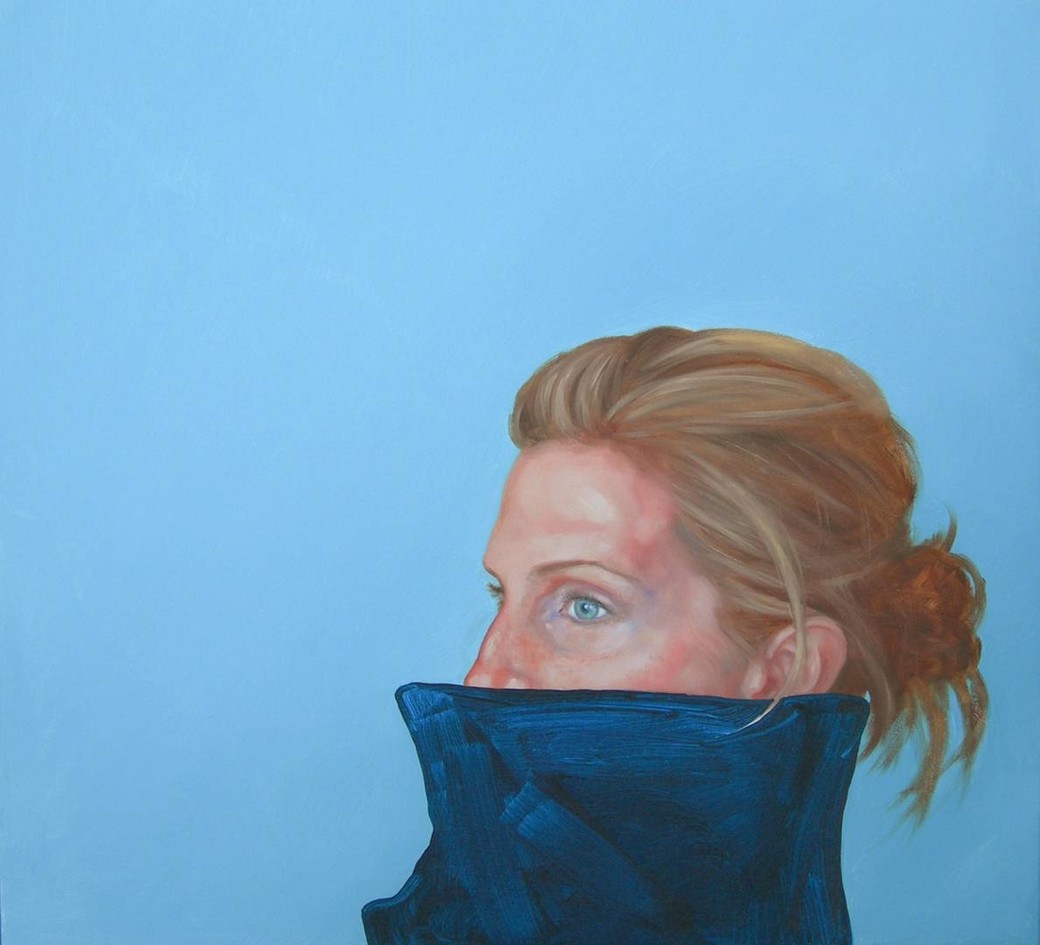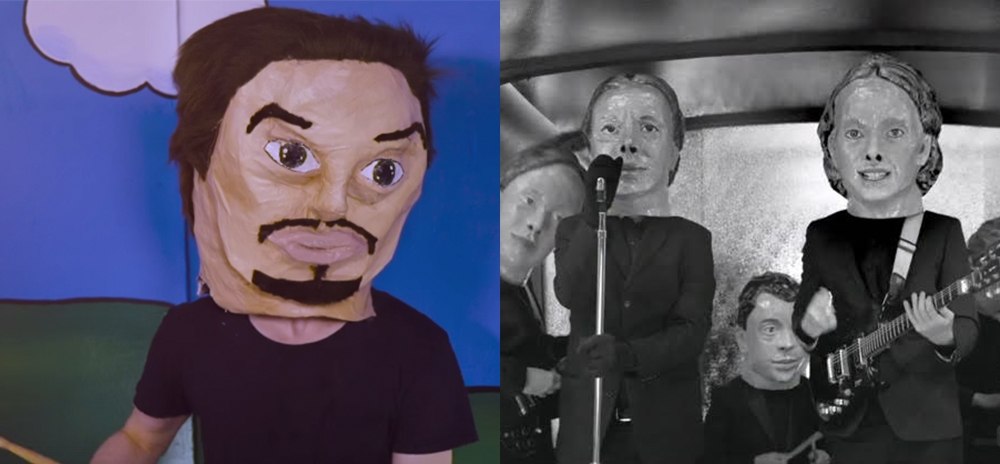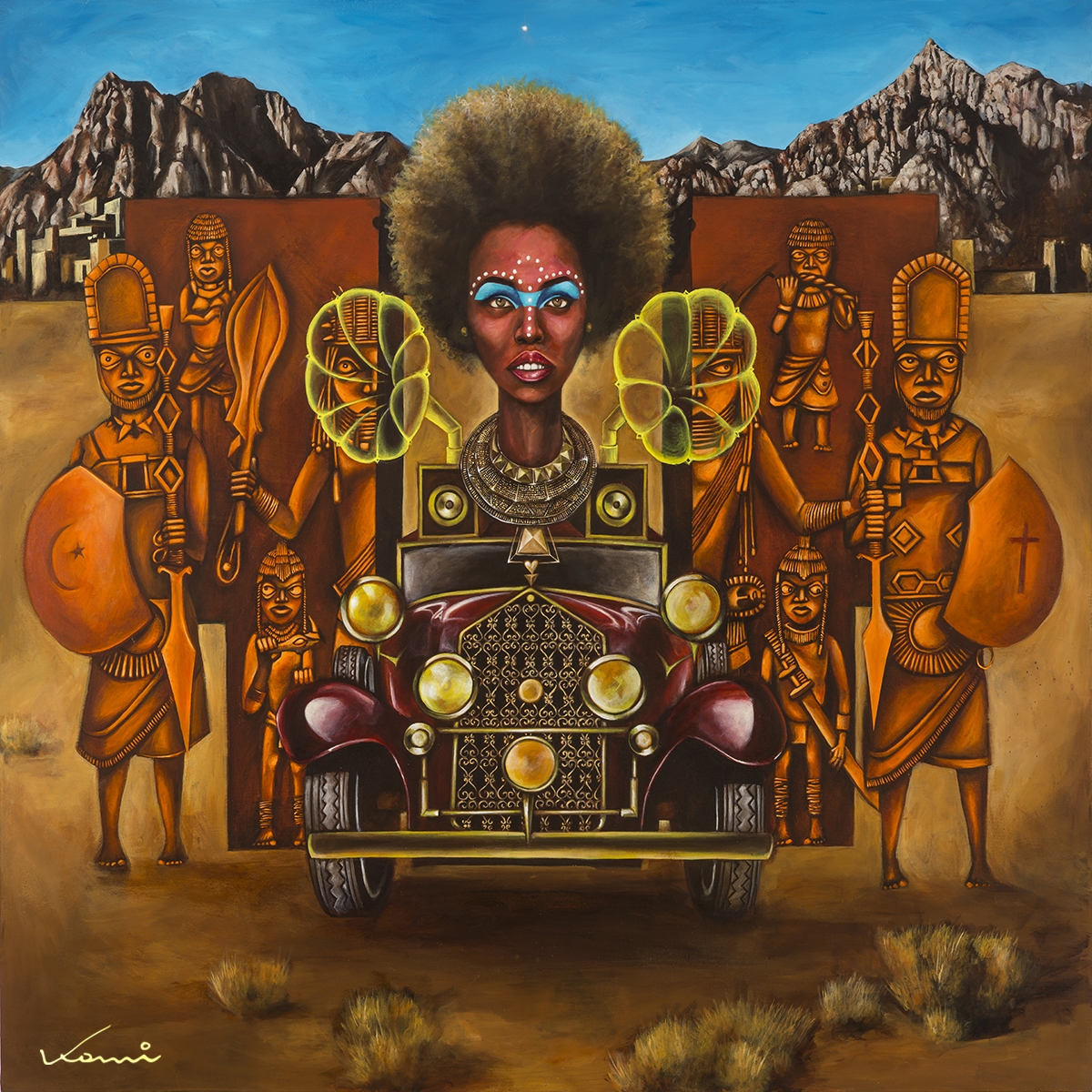
Art and Afrofuturism: An Interview with Komi Olaf
Trained as an architect before picking up his paintbrush, Ottawa-based artist, Komi Olaf, has had a stunning, decade-long career as an artist. Focusing on Afrofuturism, Komi’s stunning paintings explore the intersectionality of culture and race. His portfolio boasts commissions by the likes of afro-beat legend, Seun Kuti, and TD Bank, as well as recently being invited by the Nigerian High Commission to perform for the Ooni of Ife, his Imperial Majesty Ooni Adeyeye Enitan Ogunwusi, Ojaja II at the Canadian Museum of History.
Komi is currently working with Ottawa’s Innovation Centre as an artist. He chatted with Ottawa Life about his creative process, technology, and the future of art.
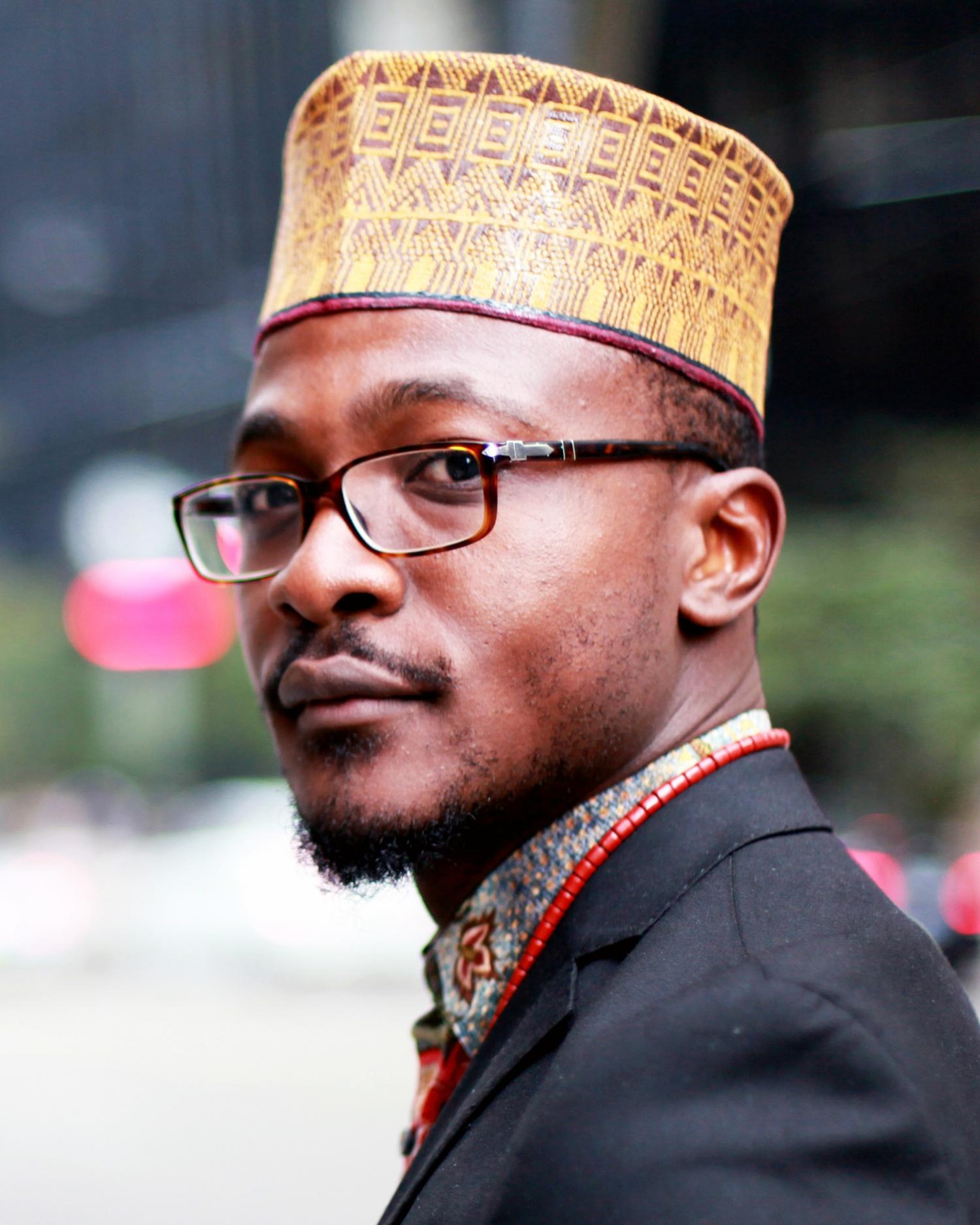 Ottawa Life: What is your artistic process like?
Ottawa Life: What is your artistic process like?
Komi Olaf: The ideal answer would be that I start from a sketch, but truthfully, that’s the most difficult process for me. I’m an improviser, so I like to start with something – anything. For example, if you ask me to paint this wall [gestures], the way I would approach it is to start painting, and while I’m doing that, the concept is generated. At the end, I can sit back and tie it all together into something that others can understand.
That’s a very creative approach.
It requires a lot of faith, both from the artist and the commissioner.
What drew you towards Afrofuturism?
Someone contacted me in 2012, asking me to participate in an Afrofuturistic exhibition. I’d never heard the term before, but I loved it. My work was already in that vein, but when I heard the term, I felt more comfortable experimenting with it – imagining people of African descent, and writing our stories into the future.
You’ve also combined art and tech through Virtual Reality.
I did a series of ten workshops called the Imagined Worlds, inviting creatives to experiment with technology. This idea of improvisation has followed me, and that’s where I believe creativity comes from – with what you have in your hands. When we think about innovation, we often think of technology. Technology can support innovation, but I wanted to create a platform where people who aren’t necessarily engaged with tech can find innovative ways to be creative.
Your parents are architects, and you have an MA in architecture. What was it like entering the art world without formal training?
I came in with an outsider’s perspective, and I still consider myself somewhat of an outsider. When you’re an outsider, you don’t know the rules – there’s a level of freedom that comes with that. Drop someone in a church who doesn't know it’s a church, and they’ll treat that space differently. Getting into the art world was exciting because I loved art from a young age, but I always thought I wanted to be an architect. The moment I found art, and the love in art, I didn’t care how difficult it was.
But you’ve had such success. What makes you still feel like an outsider?
It’s complex – for example, I’m a Yoruba man, from Western Nigeria, but I grew up with Hausa people in Northern Nigeria. Then I moved from Nigeria to Canada. I’m considered Canadian, but I’m still an immigrant. In Canada, I’m not completely Canadian, and in Nigeria, I’m not completely Nigerian. I studied architecture but I’m doing art, so artists look at me like I’m an architect, and architects look at me like I’m an artist. I do poetry, but because I do art, poets think I’m an artist. There’s no complete place of belonging. As much as I try to stay away from these disconnected identities in my art – because I know who I am – a lot of them are still evident. I’m painting black people, and in a lot of galleries in Canada, art like that isn’t completely welcomed.
 What do you mean?
What do you mean?
As a young artist, going into a museum, you see the epitome of what the world considers great art. You see all these beautiful renaissance paintings, and in the paintings you see a lot of white faces. When it comes to “black art”, for lack of a better term, it always appears to be so primitive. Its an aesthetic that I don’t feel is representative. I believe it’s necessary to create quality art that represents black people, so that younger children can see themselves in that. It has an effect on confidence – on dreaming. You know you belong in a space like this, that you’re not an outsider.
Do you believe artists have a duty to engage with the politics of representation?
110%. In the same way that politicians have access to legislation as weaponry, art is a weapon. It’s a weapon because you’re free, you can speak. You can change the way someone thinks about a subject through art, through the way you present it.
You’ve had many reputable commissioners, such as Seun Kuti and TD Bank. What was that like?
It’s very humbling, but I’ve learnt over the years to detach myself from the client. I try to treat a TD Bank client as any other. As an artist, if I’m working for you, I’m assisting you in whatever dream you have. Working with TD boosted my career big time; they were doing a marketing campaign, promoting Black History Month, which is awesome. They did a callout to artists to submit work representing the future, and they liked one of my pieces.
Which piece was it?
‘The Afrmobile’. It had religious symbols on it – a cross on one, and a moon and star on the other, with a heart in the middle of the two. The reason I included the heart was because of my background; I’ve seen brothers and sisters kill each other because of religion. Nigeria has a serious problem with Muslims and Christians not getting along, especially in Kaduna, where I grew up. With that piece, I wanted to remind people that despite religious affiliation, we all look alike – we all bleed the same red blood. Because it was corporate, TD couldn’t have religious symbols on it. I was asked to remove it, so I did. However, over the years, I’ve asked myself if it was worth it. Maybe it’s my ego talking, but the point I was trying to make with the painting was left behind.
And the piece for Seun Kuti?
I was obsessed with him growing up, and I painted a lot of paintings of him and his family. It’s a whole story – a few years back, someone contacted me because his girlfriend wanted to be painted as a water goddess. I created ‘Finding Sankofa’. The girlfriend really liked the painting, and it turned out she was an art collector, so we became friends. Later I was in Nigeria doing a competition, and I posted some of my old paintings on Instagram. One of them was the Kuti dynasty – his wife, mother, sons. She saw that and posted it on her Instagram, and because she had a huge following, Seun Kuti contacted her saying he wanted to buy it. I’d already sold that one, so I painted a new one.
Do you find your work is received differently in Nigeria than in Canada?
It’s better received here. In Canada, I find it important to have an African voice – but in Africa, you’re already in Africa. There’s a disconnect between my work and the people in Nigeria, and there’s a disconnect between my work and people here. I hope my work speaks to others who feel they don’t belong anywhere.
What has been your biggest challenge?
Trying to be as honest as possible with my work. It’s so tempting to pander to what people want. I’ve been homeless – I know how scary it is not to have money to create. There’s the temptation to compromise your values in order to get the sale, to keep the ball rolling. Also, learning to let go. In order to change, you must accept who you’re becoming by letting go of who you were. The world is changing, and art is changing, and painting may not be the best voice to communicate what I'm trying to say. A big challenge is accepting the need to change that voice.
Do you find technology helps that?
I’ve always used technology in my work, but I feel it’s important that art retains its tactile nature – its physicality. Everything is virtual, and it’s an awesome, crazy environment. The opportunities are limitless, but we have to keep our feet on the ground.
What’s been your biggest reward?
Still being able to do it now. When I started painting, everybody was worried – my family, my friends. I’d been doing really well with architecture, and all of a sudden I took a detour – a scary detour, because art is not guaranteed. It’s been ten years and I’m still doing it now. I don’t need any more validation than that. Having little kids tell me they want to be an artist is encouraging – or people that haven't painted in a long time saying they want to start again, and you see that, five years later, they’re actually doing it! It’s encouraging.
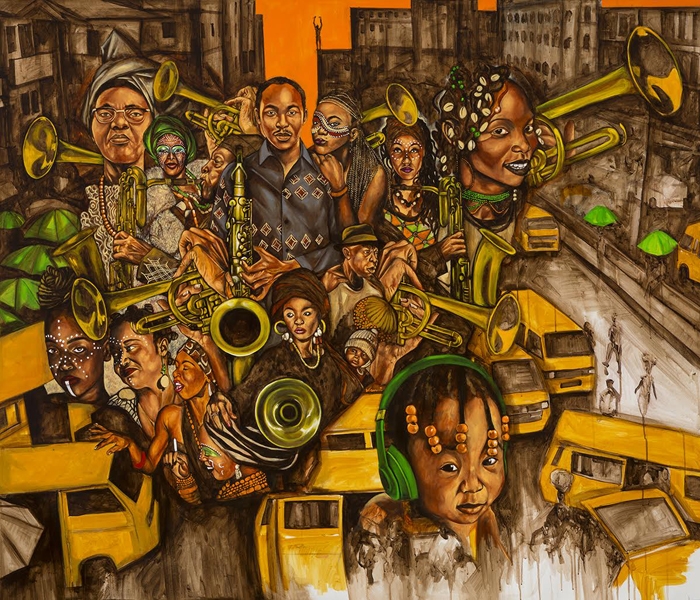
What advice do you have for artists who are just starting out?
It’s important to listen to criticism – but it’s also important that you don’t. Sometimes you need to put aside the stubbornness of your ideals, and take criticism – but filter it.
What are you working on right now?
I’ve been preoccupied with commissions for House of Paint right now. I’m also working on an idea for an exhibition – not the paintings, but the structure. There’s a poem that I’ve been struggling with for a few months, so I’m trying to wrap that up and have a show.
On that note, what’s the connection between your words and your art?
The two influence each other. There are poems I write based on art I’ve created, and vice versa. When you have a gallery show, you submit the painting, but you need to submit a description. That used to be my stomping moment – how do I describe this? The best way is poetically. That’s the connection.

